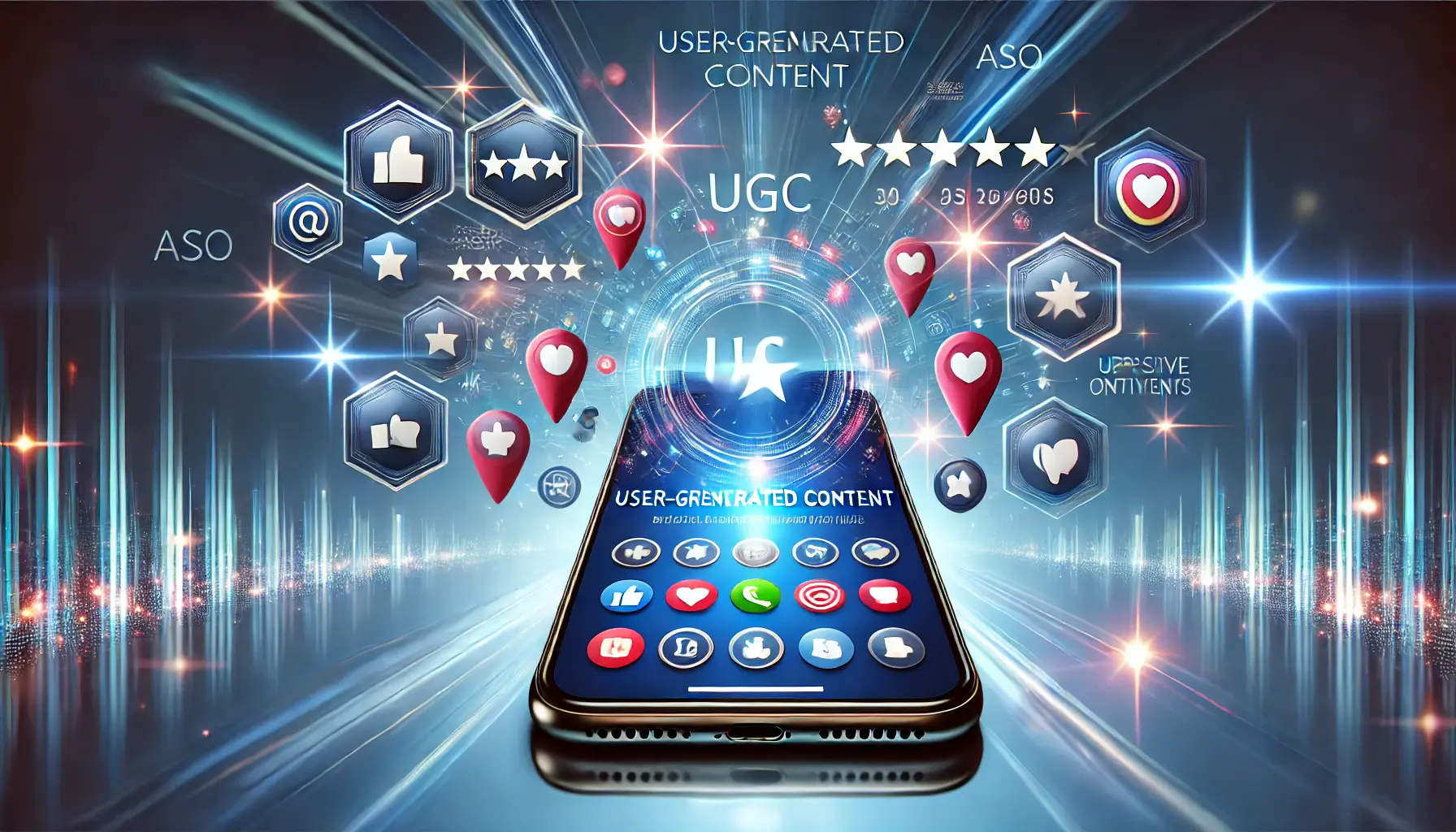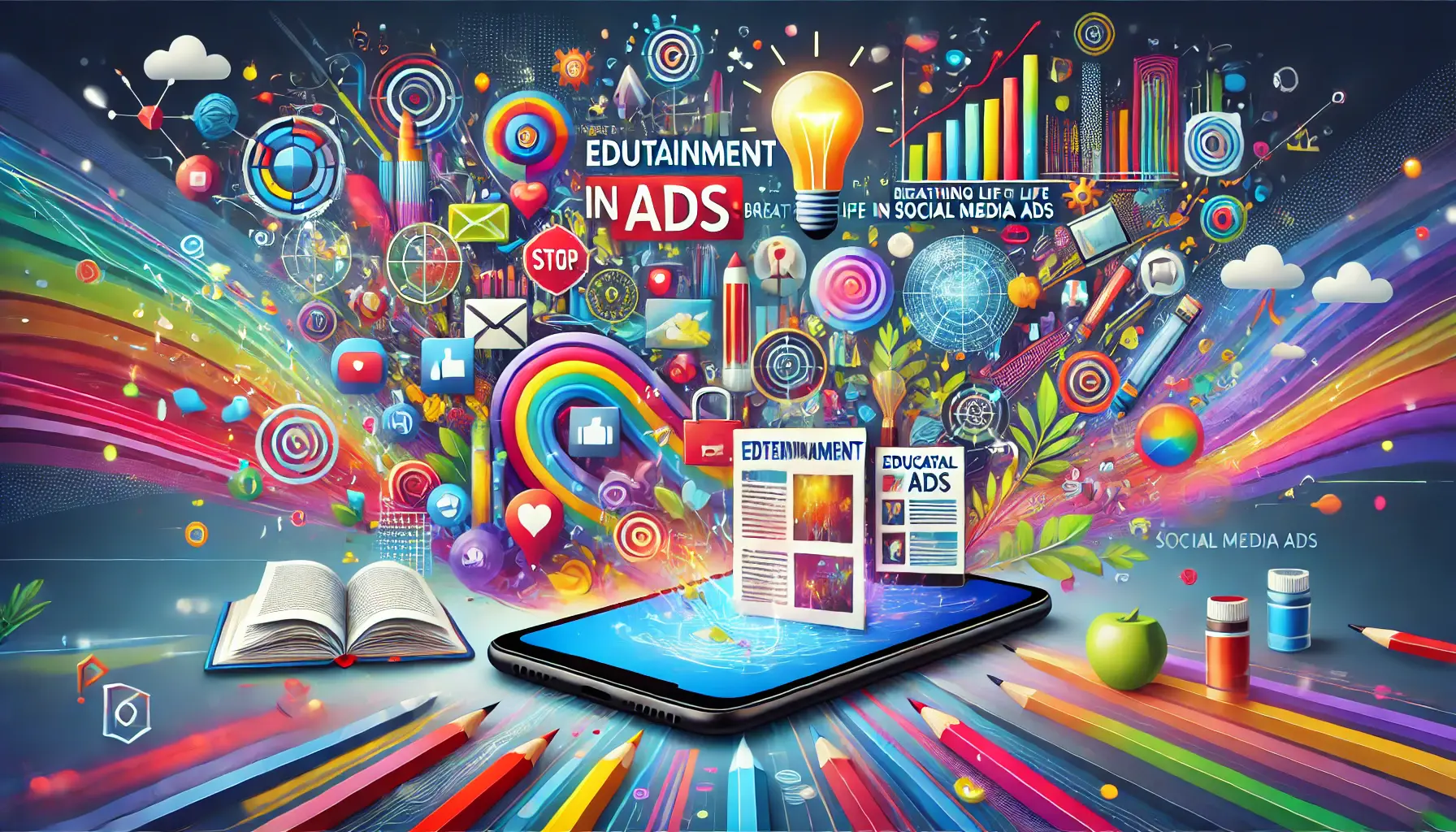The digital marketing landscape is continuously evolving, and one of the most significant shifts in recent years has been the rise of user-generated content (UGC) in social media advertising.
This phenomenon has transformed how brands interact with their audiences, leveraging the authentic voices of customers to create more engaging and relatable ad campaigns.
User-generated content refers to any form of content—be it text, videos, images, reviews, or comments—created by users rather than the brand itself.
This content is then utilized in various marketing strategies, particularly in social media ads, to enhance brand visibility, credibility, and customer engagement.
The power of UGC lies in its authenticity, as it comes directly from the experiences and perspectives of real users, making it a valuable asset in the realm of social media advertising.
- The Impact of UGC on Social Media Advertising
- Strategies for Incorporating UGC in Social Media Ads
- Challenges and Solutions in UGC Implementation
- Optimizing UGC for Different Social Media Platforms
- Future Trends in UGC and Social Media Advertising
- Best Practices for Creating Compelling UGC Campaigns
- Maximizing ROI with User-Generated Content
- Embracing the Power of User-Generated Content in Social Media Advertising
- User-Generated Content in Social Media Ads: FAQs
The Impact of UGC on Social Media Advertising
One of the most significant advantages of using UGC in social media ads is the enhancement of brand authenticity.
In an online world often saturated with polished and overly curated brand messages, UGC stands out as a breath of fresh air.
It provides a genuine, unfiltered view of a brand through the eyes of its customers.
This authenticity resonates with audiences, as they tend to trust the opinions and experiences of fellow consumers over traditional advertising.
A study revealed that 92% of consumers trust organic, user-generated content more than traditional advertising.
This trust is a crucial factor in a consumer’s decision-making process, making UGC a powerful tool in shaping brand perception and driving conversions.
Boosting Engagement and Reach
UGC also plays a vital role in boosting engagement and expanding the reach of social media ads.
When users see content created by people like themselves, it encourages interaction and sharing.
This organic spread of content enhances the reach of social media campaigns, often leading to higher engagement rates compared to traditional ads.
Moreover, the relatable nature of UGC fosters a sense of community among users, further driving engagement.
Brands leveraging UGC in their social media ads often see a significant increase in likes, comments, and shares.
This enhanced engagement not only amplifies the brand’s message but also contributes to building a loyal and active online community.
Strategies for Incorporating UGC in Social Media Ads
Successfully integrating user-generated content into social media advertising requires strategic planning and a deep understanding of your audience.
Here are key strategies to effectively leverage UGC in your social media campaigns:
- Identifying and Curating Relevant Content: The first step is to identify UGC that aligns with your brand’s message and values. This involves monitoring social media channels for mentions, hashtags, or direct tags. Curating the most relevant and impactful content is crucial for maintaining brand consistency and message alignment.
- Encouraging User Participation: Brands can actively encourage their audience to create content by launching hashtag campaigns, contests, or by simply asking for reviews and experiences. This not only generates a wealth of UGC but also fosters a sense of community and belonging among customers.
- Legal Considerations and Permissions: Before using user-generated content, it’s essential to obtain proper permissions. This ensures legal compliance and respects the content creators’ rights, fostering a trust-based relationship between the brand and its audience.
Implementing these strategies ensures a steady stream of authentic and engaging content that can be utilized in various social media ad formats, from stories and posts to sponsored content.
Case Studies: Successful UGC Campaigns
Several brands have successfully harnessed the power of UGC in their social media advertising, setting benchmarks in the industry.
For instance, GoPro’s user-centric approach encourages customers to share their adventurous experiences captured on GoPro cameras.
These real-life, thrilling moments create compelling content for their social media ads, enhancing the brand’s image as an enabler of extraordinary experiences.
Another notable example is Starbucks’ #WhiteCupContest, where customers were invited to decorate their Starbucks cups and share the designs on social media.
The campaign not only generated a plethora of creative content but also significantly increased customer engagement and brand visibility.
These case studies highlight the effectiveness of UGC in creating relatable and engaging social media ads that resonate with the audience, driving both engagement and brand loyalty.
Challenges and Solutions in UGC Implementation
While user-generated content offers numerous benefits, its implementation in social media ads is not without challenges.
Addressing these challenges effectively is key to harnessing the full potential of UGC.
- Content Quality and Consistency: The varied nature of UGC can lead to inconsistencies in content quality. Brands need to establish clear guidelines and criteria for selecting UGC that aligns with their image and quality standards.
- Maintaining Brand Voice: Integrating UGC means incorporating external voices into your brand narrative. It’s crucial to balance these voices with your brand’s tone and messaging to maintain a cohesive brand identity.
- Scaling UGC for Larger Campaigns: For larger campaigns, manually curating UGC can be time-consuming. Utilizing UGC platforms that aggregate and filter content can streamline this process, ensuring a steady supply of relevant content.
Overcoming these challenges involves a strategic approach to content curation, a clear understanding of brand identity, and the use of technology to manage and scale UGC effectively.
Measuring the Impact of UGC in Social Media Ads
To gauge the success of UGC in social media advertising, brands must track key performance indicators (KPIs) such as engagement rates, click-through rates (CTRs), and conversion rates.
Analyzing these metrics provides insights into how UGC is resonating with the audience and influencing consumer behavior.
For instance, tracking the engagement rates of posts featuring UGC versus traditional ads can reveal the relative effectiveness of user-generated content in capturing audience attention.
Similarly, analyzing CTRs and conversion rates can offer a deeper understanding of how UGC influences purchasing decisions.
It’s important to note that the impact of UGC may vary based on the campaign’s objectives, target audience, and the nature of the content itself.
Therefore, a nuanced approach to measurement and analysis is essential.
Optimizing UGC for Different Social Media Platforms
Each social media platform has its unique audience and content preferences.
Optimizing user-generated content for different platforms is crucial to maximize its impact.
Here’s how UGC can be tailored for major social media channels:
- Instagram: Known for its visual appeal, Instagram is ideal for sharing high-quality images and short videos. UGC campaigns on Instagram can leverage aesthetically pleasing user content, such as photos or stories, that showcase the brand in a lifestyle context.
- Facebook: With its diverse user base, Facebook is suitable for a variety of UGC, including longer-form videos, detailed customer reviews, and image-based posts. Interactive UGC, like polls or Q&A sessions, can also be effective on this platform.
- Twitter: Twitter’s fast-paced nature calls for concise, impactful UGC. Short testimonials, quick product mentions, and user tweets that align with trending topics can be particularly effective.
- TikTok: For a younger demographic, TikTok is an excellent platform for creative, entertaining UGC. Short, engaging videos that align with popular trends or challenges can boost brand visibility and engagement.
Understanding the nuances of each platform allows brands to present UGC in the most engaging and appropriate manner, ensuring better audience resonance and campaign success.
Integrating UGC with Influencer Marketing
Influencer marketing and user-generated content are powerful allies in social media advertising.
Influencers can act as catalysts, inspiring their followers to create UGC.
For example, a brand might collaborate with an influencer to start a hashtag challenge, encouraging followers to create content around a theme or product.
This integration not only amplifies the reach of the campaign but also adds an element of credibility, as influencers are often viewed as trusted figures by their followers.
The synergy between influencer-led initiatives and organic UGC can create a more dynamic and authentic campaign.
Leveraging influencers to kickstart UGC campaigns can be particularly effective in reaching niche audiences and generating high-quality content that resonates with specific demographic groups.
Future Trends in UGC and Social Media Advertising
The landscape of user-generated content in social media advertising is constantly evolving.
Staying ahead of these trends is crucial for brands looking to leverage UGC effectively.
Here are some emerging trends that are shaping the future of UGC in social media ads:
- Augmented Reality (AR) and UGC: The integration of AR technology in social media platforms offers new avenues for UGC. Brands can create AR filters or experiences that encourage users to create and share content, adding an interactive and immersive dimension to UGC campaigns.
- Video Content Dominance: With the rising popularity of platforms like TikTok and Instagram Reels, video content is becoming increasingly dominant. Brands can expect to see more user-generated videos, ranging from short-form clips to longer, story-driven content.
- Personalization and AI: Advances in AI and machine learning are enabling brands to personalize UGC campaigns at scale. AI can help in curating content that resonates with individual preferences, enhancing the relevance and impact of UGC in social media ads.
These trends indicate a future where UGC becomes more interactive, personalized, and immersive, offering exciting opportunities for brands to engage with their audience in novel ways.
Adapting to Changing Consumer Behaviors
Consumer behaviors and preferences are continually changing, and UGC strategies need to adapt accordingly.
Brands must stay attuned to shifts in consumer sentiment, platform preferences, and content consumption patterns to ensure their UGC campaigns remain effective and relevant.
For instance, the growing concern for authenticity and transparency among consumers is prompting brands to adopt more genuine and less polished UGC.
Similarly, the shift towards mobile-first content consumption is influencing the format and style of user-generated content.
Staying responsive to these changes and adapting UGC strategies accordingly will be key for brands to maintain engagement and relevance in their social media advertising efforts.
Best Practices for Creating Compelling UGC Campaigns
To maximize the impact of user-generated content in social media ads, it’s essential to follow best practices that ensure the effectiveness and authenticity of your campaigns.
Here are some key strategies to consider:
- Clear and Engaging Calls-to-Action (CTAs): Encourage user participation by creating clear and compelling CTAs. Whether it’s asking for product reviews, sharing experiences, or participating in a challenge, your CTA should be direct and engaging.
- Diverse Content Representation: Ensure that the UGC you feature represents a diverse range of customers. This inclusivity not only broadens your appeal but also strengthens the connection with various audience segments.
- Regular Monitoring and Moderation: Continuously monitor and moderate the UGC to maintain quality and relevance. This also helps in promptly addressing any negative content or feedback.
Implementing these practices will help in creating UGC campaigns that are not only effective in reaching your target audience but also in building a positive and inclusive brand image.
Utilizing UGC for Long-Term Brand Building
User-generated content is not just a tool for short-term campaigns; it can be a powerful asset for long-term brand building.
By consistently featuring authentic UGC, brands can cultivate a loyal community, enhance brand trust, and establish a strong brand identity over time.
Incorporating UGC into your ongoing marketing efforts, such as featuring customer stories on your website or social media profiles, can reinforce your brand values and create a lasting connection with your audience.
It’s a misconception that UGC is only effective for temporary campaigns.
When used strategically, UGC can be a cornerstone in building and maintaining a strong, relatable, and trusted brand presence.
Maximizing ROI with User-Generated Content
For brands looking to maximize their return on investment (ROI) in social media advertising, user-generated content offers a cost-effective and impactful solution.
Here are strategies to ensure that your UGC campaigns deliver optimal ROI:
- Targeted Content Distribution: Distribute UGC strategically across various social media platforms to reach your target audience effectively. Tailoring content to suit the specific audience and platform can significantly enhance engagement and conversion rates.
- Leveraging UGC in Multiple Formats: Repurpose UGC across different formats, such as testimonials on your website, social media posts, or even in email marketing campaigns. This multi-channel approach maximizes the value of each piece of content.
- Measuring and Analyzing Campaign Performance: Regularly measure the performance of your UGC campaigns using analytics tools. Track metrics like engagement rates, click-through rates, and conversion rates to understand the impact of UGC and refine your strategies accordingly.
By implementing these strategies, brands can not only enhance the effectiveness of their social media ads but also achieve a higher ROI, making UGC a valuable component of their marketing mix.
Building Sustainable UGC Ecosystems
Creating a sustainable ecosystem for user-generated content involves fostering a community where customers are continually motivated to share their experiences and stories.
Encouraging ongoing engagement through rewards, recognition, and interactive campaigns can help maintain a steady flow of UGC.
Additionally, nurturing relationships with your most active and creative users can turn them into brand advocates, further amplifying the reach and impact of your UGC efforts.
A sustainable UGC ecosystem not only supports current marketing goals but also lays the foundation for future campaigns, ensuring a long-term supply of authentic and engaging content for your brand.
Embracing the Power of User-Generated Content in Social Media Advertising
The integration of user-generated content into social media ads represents a paradigm shift in digital marketing.
This strategy not only enhances brand authenticity and engagement but also fosters a deeper connection with the audience.
As we have explored, UGC’s impact on social media advertising is profound, offering a unique blend of authenticity, relatability, and effectiveness that traditional advertising methods struggle to match.
Key Takeaways for Maximizing UGC Impact
- Strategic Planning: Effective UGC campaigns require careful planning, from content curation to platform-specific optimization.
- Community Engagement: Encouraging and nurturing user participation is crucial for a steady stream of quality UGC.
- ROI Enhancement: UGC offers a cost-effective solution with a high potential for ROI, making it an invaluable tool for marketers.
In conclusion, user-generated content in social media ads is not just a trend but a fundamental shift in how brands interact with their audience.
By leveraging the authentic voices of their customers, brands can create more impactful, engaging, and relatable advertising campaigns.
As the digital landscape continues to evolve, the role of UGC in social media advertising will undoubtedly grow, offering new and exciting opportunities for brands to connect with their audience in meaningful ways.
Enjoyed the article? Let its author handle your social media ads. Visit our service page to get started!
User-Generated Content in Social Media Ads: FAQs
Explore common questions about leveraging user-generated content in social media advertising.
User-generated content in social media refers to any content—text, videos, images, reviews—created by users rather than brands, used in advertising.
Brands can find user-generated content by searching existing content on social media, using branded hashtags, or encouraging customer reviews.
User-generated content is crucial for ads as it enhances authenticity, boosts engagement, and resonates more effectively with the target audience.
Effective UGC types for ads include customer testimonials, product reviews, creative images and videos, and engaging social media posts.
UGC influences consumer behavior by providing authentic peer reviews and experiences, which can significantly sway purchasing decisions.
Yes, UGC can improve ad performance by increasing relatability, enhancing trust, and encouraging higher engagement and click-through rates.
Challenges with UGC in ads include maintaining content quality, ensuring brand alignment, and obtaining legal permissions for use.
Measure UGC impact by tracking engagement rates, click-through rates, conversion rates, and overall audience sentiment towards the ads.










